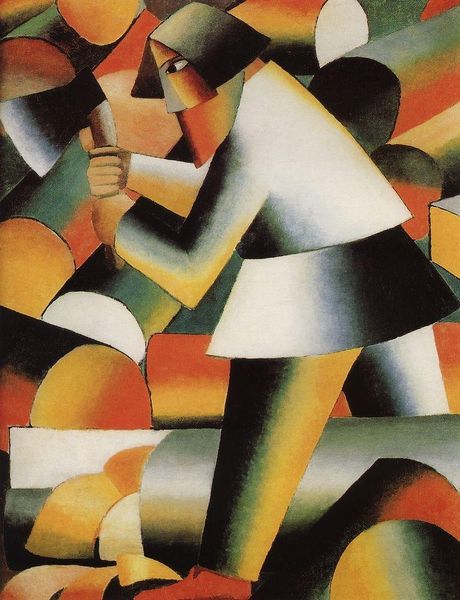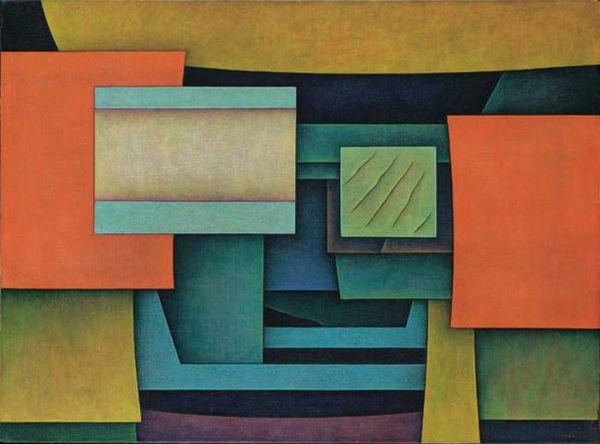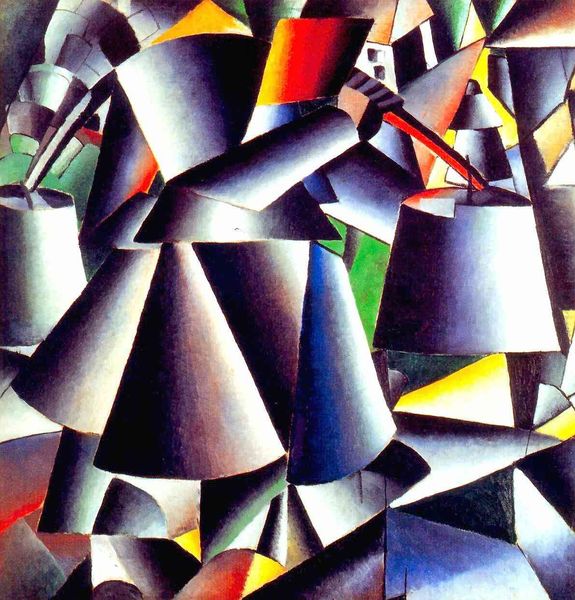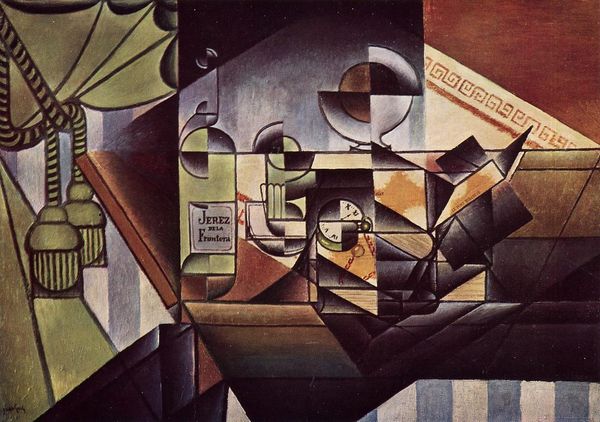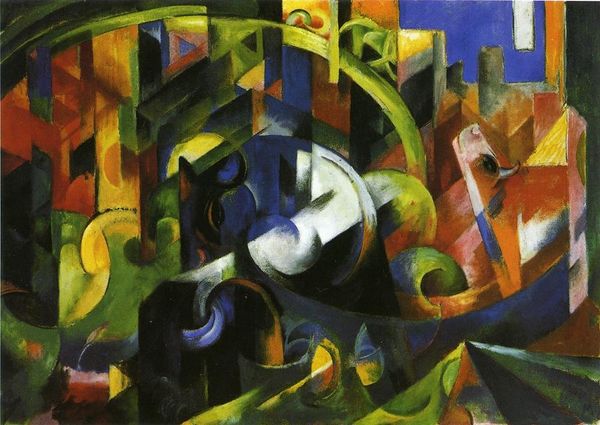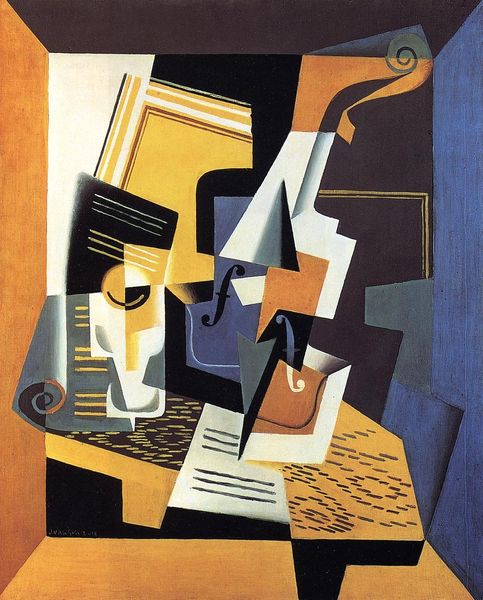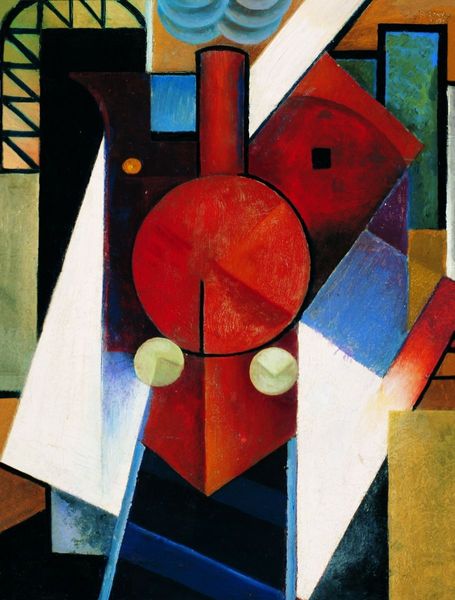
painting, oil-paint
#
portrait
#
cubism
#
abstract painting
#
painting
#
oil-paint
#
painted
#
figuration
#
oil painting
#
geometric
#
abstraction
#
russian-avant-garde
#
futurism
Dimensions: 112 x 70 cm
Copyright: Public domain
Editor: Here we have Kazimir Malevich’s "Portrait of Ivan Kliun," painted in 1913 using oil paint. It’s quite a striking portrait, a very fragmented and geometric figure, almost like a machine. What do you see in this piece? Curator: This portrait is compelling, especially if we consider the context of its making. Look at the way Malevich, deeply immersed in the Russian avant-garde movement, has portrayed Kliun. He dismantles the traditional portrait. Instead of capturing likeness, he represents the *process* of industrialization reshaping Russian society. Do you notice the factory-like elements emerging from the head, a radical move from academic training that still influenced Russian art and its patrons? Editor: Yes, I see the geometric shapes resembling smokestacks, almost overwhelming the human element. What does this imply? Curator: Malevich is likely engaging with the anxieties and promises surrounding the rapid shift from an agrarian society to one centered around industrial production. The sharp lines, the hard-edged planes... these mimic the materials—steel, glass—becoming dominant forces in life. The oil paint itself, usually a vehicle for illusionism, here is applied in blocks, calling attention to its materiality, its existence on the canvas rather than serving as a window to another world. The application mimics production. What does this visual vocabulary tell you? Editor: That art isn't divorced from the rapid industrial changes, but an integral part of processing society's shifts. The *making* mirrors social change itself. I appreciate that point. Thanks! Curator: Exactly! Reflecting upon materiality enables us to interpret not only visual and artistic styles but also deeper contexts.
Comments
No comments
Be the first to comment and join the conversation on the ultimate creative platform.
